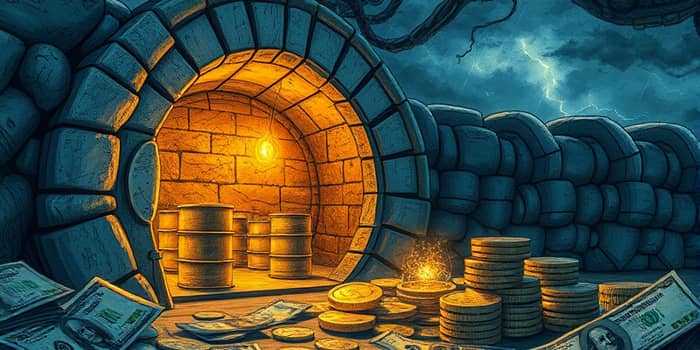
In an era defined by unpredictability and rapid shifts in global markets, having a reliable safety net can mean the difference between crisis and opportunity. Strategic reserves, whether in the form of commodities, cash, or defensive assets, serve as that vital cushion. This article explores why maintaining reserves is not just prudent but essential for governments, institutions, and individual investors alike.
By examining real-world examples, practical guidelines, and potential pitfalls, you’ll gain the insights needed to build and manage reserves effectively, ensuring you are prepared when volatility strikes.
Strategic reserves are stocks of essential commodities held by governments, corporations, and private investors to guard against supply disruptions. They may include oil, critical minerals, cash, or market-resilient securities.
At its core, a reserve provides a buffer. When normal supply chains falter—or markets tumble—reserves step in to stabilize prices and maintain liquidity.
Strategic reserves fulfill several vital functions:
Diverse reserve categories address different risks and objectives:
Building and managing reserves effectively requires discipline and foresight. Key considerations include:
The United States has long relied on its Strategic Petroleum Reserve (SPR). As of mid-2025, it held around 400 million barrels—barely a 20-day supply—while aiming to restore capacity to 700 million barrels, closer to a 35-40 day buffer.
China’s rapid expansion of reserves illustrates another approach. By importing over 1.7 million barrels per day of Iranian oil, it has fortified itself against potential disruptions in the Strait of Hormuz.
For individuals, financial planners recommend maintaining three to six months’ worth of living expenses in liquid accounts. During the 2020 market downturn, those with cash cushions were able to buy undervalued equities at historic discounts.
Maintaining reserves is not without cost. Storage, management, and opportunity expenses can strain budgets, whether for a sovereign wealth fund or an average household.
Some policy experts argue for leaner government-held reserves to reduce fiscal burdens. However, recent supply chain disruptions and energy crises have underscored the dangers of underpreparedness.
Moreover, as economies transition away from fossil fuels, the composition of reserves must evolve. Critical minerals for green technologies may replace some traditional oil or gas stockpiles.
Strategic reserves are far more than an insurance policy—they are a powerful tool for navigating uncertainty and seizing opportunities in tumultuous times. Whether safeguarding national energy supplies or preserving household wealth, thoughtful planning, disciplined execution, and periodic reviews are essential.
By committing to transitioning to new economic paradigms and maintaining robust reserves, governments and individuals alike can weather downturns and emerge stronger on the other side.
References













